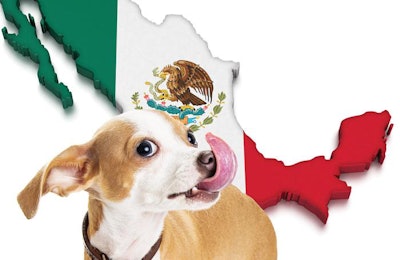
Historically, Mexico is not a great trader of pet food products. The sum of the pet food trade represented just 93,000 metric tons in 2018, or around 7.5% of its total domestic supply.
It is usual that the country posts a negative trade balance (deficit), as pet food imports usually outnumber exports.
However, since 2017, the country started to reduce that gap, increasing its global pet food exports.
As of June 2019, Mexico cumulated imports of 28,112 metric tons, while exports amounted to 21,146 metric tons. Such results are historic for the industry, as, in previous years, imports nearly doubled exports.
Domestic exporters of pet food are well-established manufacturers with excess production, which are eager to increase their participation in foreign markets. These companies are increasingly exporting surpluses, mainly to Central America and the Caribbean regions.
The two main destination countries of Mexican pet food products are Guatemala and Costa Rica. The second group of export destinations is comprised of El Salvador, Panama, Honduras and the Dominican Republic.
Regarding imports, one interesting fact is that Mexico largely buys regular-priced and premium products, while exports are comprised mainly of economy-priced products. Thus, it is not surprising that the total value of Mexican pet food exports in dollar terms is nearly half that of imports.
Furthermore, as nearly 90% of volume imports come from the United States alone, it is remarkable that pet food imports did not decrease despite the consistent peso depreciation in past years.
US- and Canada-based companies are also ready to expand to Mexico
On the other hand, some North American-based companies are continually seeking new business opportunities in Latin America, with particular focus on Mexico, as the country has a buoyant pet food market and the costs of exporting to this market are relatively lower compared to other countries further south in the region.
In sum, it is expected that Mexico continues to increase exports and imports in the coming years.
Yet, it is also likely that, at least in volume terms, Mexican exports outnumber imports for the first time, which will signify a change to the domestic pet food market, as it will become an international-oriented market in continuous expansion.

















